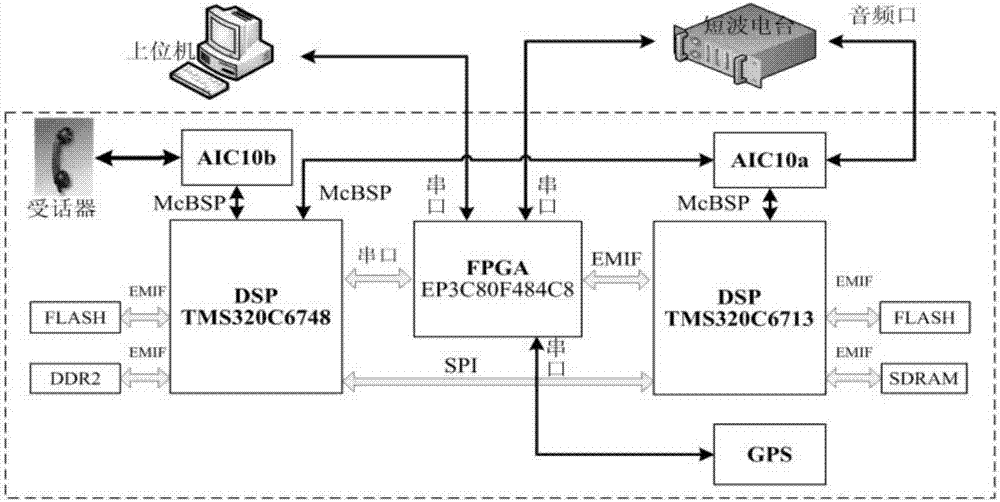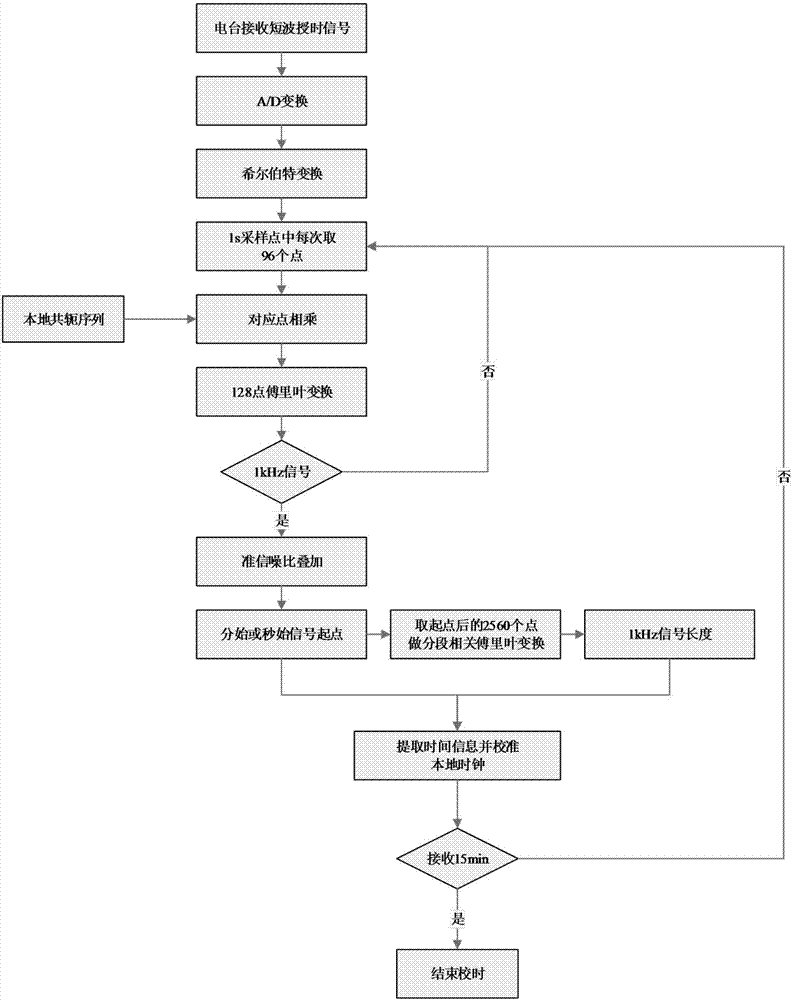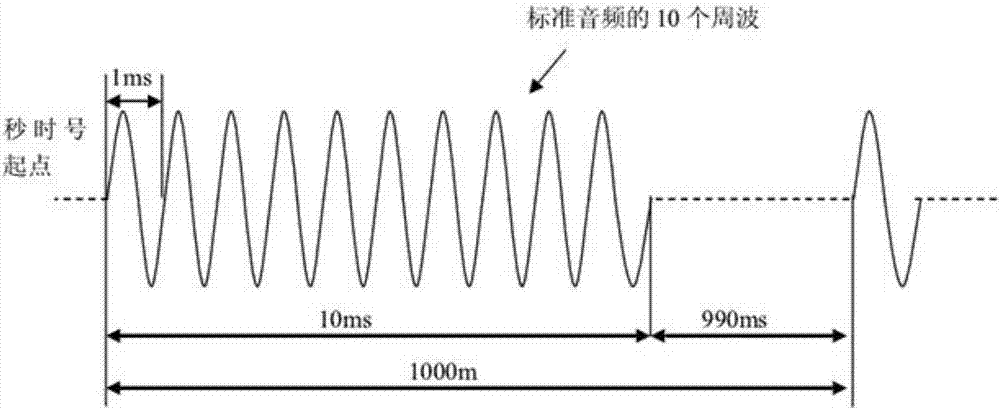Method for calibrating local clock through utilization of short wave time service signal
A local clock and signal technology, applied in multiplex communication, time-division multiplex system, radio-controlled timer, etc., can solve the problem of complex structure of short-wave timing receivers, inability to extract time information from signals, and anti-noise performance Poor problems, to achieve the effect of low resource consumption, weaken the influence of noise, and ensure the accuracy requirements
- Summary
- Abstract
- Description
- Claims
- Application Information
AI Technical Summary
Problems solved by technology
Method used
Image
Examples
Embodiment Construction
[0046]The present invention is a method for calibrating the local clock by extracting time information from short-wave timing signals. By performing Fourier transform on the received short-wave timing signals, the obtained quasi-signal-to-noise ratios are continuously superimposed to obtain accurate quasi-signal-to-noise ratios. The position of the maximum value, so as to determine the accurate starting point position of the timing signal, the length of the signal is judged by taking a point from the starting position of the signal and performing a segmented correlation Fourier transform, and then according to the broadcast schedule of the signal and the length of the received signal Determine the minutes and seconds of the standard time, and finally replace the minutes and seconds of the local clock with the minutes and seconds of the determined standard time to complete the calibration of the local clock.
[0047] refer to figure 1 , the shortwave integrated service communi...
PUM
 Login to View More
Login to View More Abstract
Description
Claims
Application Information
 Login to View More
Login to View More - R&D
- Intellectual Property
- Life Sciences
- Materials
- Tech Scout
- Unparalleled Data Quality
- Higher Quality Content
- 60% Fewer Hallucinations
Browse by: Latest US Patents, China's latest patents, Technical Efficacy Thesaurus, Application Domain, Technology Topic, Popular Technical Reports.
© 2025 PatSnap. All rights reserved.Legal|Privacy policy|Modern Slavery Act Transparency Statement|Sitemap|About US| Contact US: help@patsnap.com



